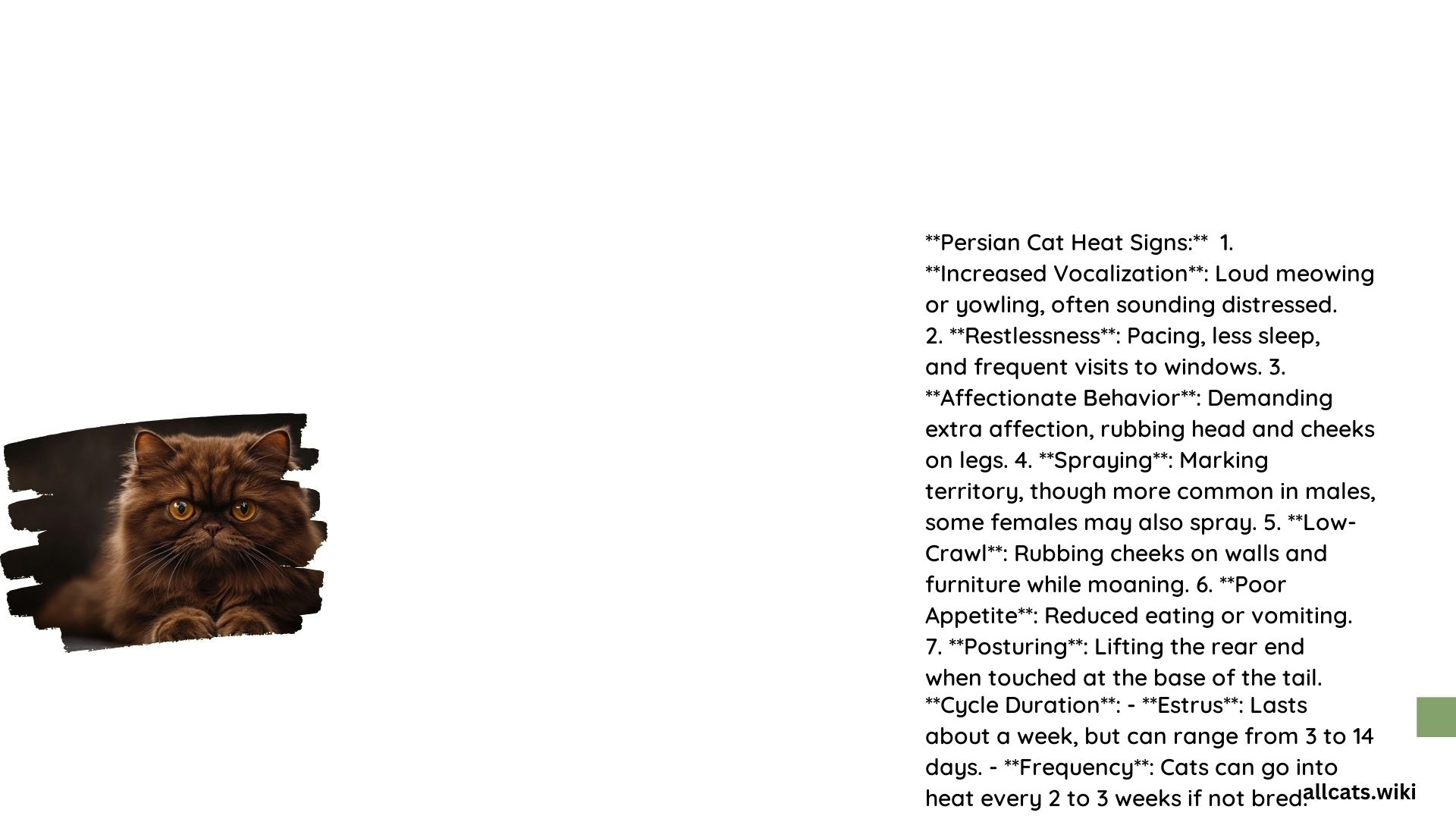The signs of heat in Persian cats, as in other female cats, are primarily behavioral and physical, and they do not differ significantly from those of other breeds. These signs include vocalizations, restlessness, affectionate behavior, changes in grooming habits, and more. Understanding the frequency and duration of heat cycles in Persian cats is also crucial for their care and well-being.
What are the Behavioral and Physical Signs of Heat in Persian Cats?

Persian cats exhibit several behavioral and physical signs when they are in heat. These include:
-
Vocalizations: Cats in heat tend to vocalize loudly, often described as “calling” or yowling. This behavior can be persistent and may sound distressed.
-
Restlessness: Cats may exhibit restlessness, pacing, and an inability to relax or get comfortable. This is often accompanied by vocalizations.
-
Affectionate Behavior: Female cats in heat may become unusually affectionate, rubbing against furniture, people, and other cats. They may also display behaviors like sidling and rubbing their hindquarters.
-
Grooming Habits: Cats in heat often spend more time grooming their genital area, which can become swollen and uncomfortable.
-
Mating Position: Cats will assume the mating position, characterized by a head down, forelegs bent, rear quarters raised, and tail raised and held to the side. This posture is called lordosis.
-
Marking Behavior: Female cats in heat may spray vertical surfaces to mark their territory, similar to male cats. This behavior is a way of signaling to potential mates.
-
Changes in Appetite: Cats in heat may exhibit a decrease in appetite, which can lead to gastric issues if not monitored.
-
Social Interactions: Cats may demand extra affection and may become more clingy. They may also try to escape outdoors to find a mate, which can be risky.
How Frequent are Heat Cycles in Persian Cats?

The frequency and duration of heat cycles in Persian cats are important to understand:
-
First Heat Cycle: The first heat cycle typically begins when a female Persian cat is between six to ten months old, although some may start as early as four months.
-
Duration of Heat Cycle: The estrus stage, when the cat is fertile and receptive to males, lasts about seven days on average but can range from one to 21 days.
-
Frequency of Cycles: Persian cats are seasonal breeders, with heat cycles more frequent during seasons with longer days (spring and summer). They may experience heat cycles every two to three weeks unless they become pregnant.
-
Annual Cycle: Persian cats typically experience heat cycles from spring to fall, with an inactive period (anestrus) during the winter months when daylight is shortest.
What Other Factors Influence Heat Cycles in Persian Cats?
There are a few additional considerations when it comes to heat cycles in Persian cats:
-
Seasonal Influence: Persian cats are long-day breeders, meaning their heat cycles are influenced by daylight. They are more active in breeding during spring and summer.
-
Health Considerations: Unspayed female Persian cats are at higher risk for certain health issues, such as pyometra, pseudopregnancy, and various cancers. Spaying is recommended to prevent these issues.
By understanding the signs of heat in Persian cats, as well as the frequency and duration of their heat cycles, pet owners can better care for their feline companions and ensure their overall health and well-being.
References
- The Spruce Pets: “Signs of Heat in Cats”
- PetMD: “Cats in Heat: How Long It Lasts and What To Do”
- Elanco: “How to tell if your cat is in heat”
